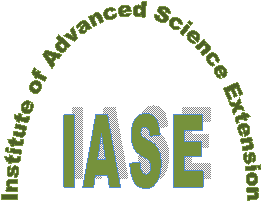International
ADVANCED AND APPLIED SCIENCES
EISSN: 2313-3724, Print ISSN: 2313-626X
Frequency: 12
![]()
Volume 10, Issue 11 (November 2023), Pages: 28-34
----------------------------------------------
Original Research Paper
Quantifying research publication efficiency: A comparative analysis of the HY-index and the h-index
Author(s):
Affiliation(s):
1Electronic and Communications Department, College of Engineering – Al-Leith, Umm Al-Qura University, Makkah, Saudi Arabia
2Mathematics Department, Faculty of Education, Alexandria, Alexandria University, Egypt
3Mechanical Engineering Department, College of Engineering and Islamic Architecture, Umm Al-Qura University, Makkah, Saudi Arabia
4Mathematic Department, College of Applied Science, Umm Al-Qura University, Makkah, Saudi Arabia
Full text
* Corresponding Author.
 Corresponding author's ORCID profile: https://orcid.org/0000-0002-5796-3217
Corresponding author's ORCID profile: https://orcid.org/0000-0002-5796-3217
Digital Object Identifier (DOI)
https://doi.org/10.21833/ijaas.2023.11.004
Abstract
Efficiently quantifying the scholarly output of researchers, scientists, academic institutions, departments, and universities is of paramount importance within academic circles. This study centers on the application of a novel index known as the HY-Index, designed to evaluate the quality of articles from various sources, with the primary aim of addressing the limitations associated with established indices, notably the widely-used h-index. We deploy the HY-Index alongside the h-index to assess the performance of the top fifty researchers affiliated with Umm Al-Qura University, using data from the Google Scholar database. Comparative analyses are conducted, and rankings based on the HY-Index and h-index are scrutinized to determine which index offers a more suitable approach for quantifying researcher efficiency. Our findings reveal that the linear trend equation of the HY-Index rank closely aligns with the linear trend equation of the citation rank, surpassing the alignment observed with the h-index rank. Additionally, the linear trend equation of the HY-Index rank exhibits greater similarity to the linear trend equation of the publications rank compared to the h-index rank. Consequently, the HY-Index provides a more precise means of assessing author quality based on both citation and publication rankings, offering a fairer measurement of author quality compared to the h-index.
© 2023 The Authors. Published by IASE.
This is an
Keywords
Researcher efficiency, HY-index, h-index, Scholarly publications, Citation analysis
Article history
Received 28 May 2023, Received in revised form 25 September 2023, Accepted 13 October 2023
Acknowledgment
No Acknowledgment.
Compliance with ethical standards
Conflict of interest: The author(s) declared no potential conflicts of interest with respect to the research, authorship, and/or publication of this article.
Citation:
Alzahrani MSJ, Youssef HM, and Alghamdi NA (2023). Quantifying research publication efficiency: A comparative analysis of the HY-index and the h-index. International Journal of Advanced and Applied Sciences, 10(11): 28-34
Figures
Tables
----------------------------------------------
References (19)
- Alzahrani MS (2013). Seat assignment problem optimization. International Journal of Computer and Information Engineering, 7(5): 628-631. [Google Scholar]
- Bornmann L, Daniel HD (2007). What do we know about the h index? Journal of the American Society for Information Science and Technology, 58(9): 1381-1385. https://doi.org/10.1002/asi.20609 [Google Scholar]
- Garfield E (1955). Citation indexes for science: A new dimension in documentation through association of ideas. Science, 122(3159): 108-111. https://doi.org/10.1126/science.122.3159.108 [Google Scholar] PMid:14385826
- Hirsch JE (2005). An index to quantify an individual's scientific research output. Proceedings of the National Academy of Sciences, 102(46): 16569-16572. https://doi.org/10.1073/pnas.0507655102 [Google Scholar] PMid:16275915 PMCid:PMC1283832
- Hirsch JE (2007). Does the h index have predictive power? Proceedings of the National Academy of Sciences, 104(49): 19193-19198. https://doi.org/10.1073/pnas.0707962104 [Google Scholar] PMid:18040045 PMCid:PMC2148266
- Hirsch JE and Buela-Casal G (2014). The meaning of the h index. International Journal of Clinical and Health Psychology, 14(2): 161-164. https://doi.org/10.1016/S1697-2600(14)70050-X [Google Scholar]
- Hudson J, Laband DN (2013). Using and interpreting journal rankings: Introduction. The Economic Journal, 123(570): F199-F201. https://doi.org/10.1111/ecoj.12066 [Google Scholar]
- Jin B, Liang L, Rousseau R, and Egghe L (2007). The R-and AR-indices: Complementing the h-index. Chinese Science Bulletin, 52(6): 855-863. https://doi.org/10.1007/s11434-007-0145-9 [Google Scholar]
- Jones T, Huggett S, and Kamalski J (2011). Finding a way through the scientific literature: Indexes and measures. World Neurosurgery, 76(1-2): 36-38. https://doi.org/10.1016/j.wneu.2011.01.015 [Google Scholar] PMid:21839937
- Kulasegarah J and Fenton JE (2010). Comparison of the h index with standard bibliometric indicators to rank influential otolaryngologists in Europe and North America. European Archives of Oto-Rhino-Laryngology, 267: 455-458. https://doi.org/10.1007/s00405-009-1009-5 [Google Scholar] PMid:19551398
- Larsen P and Von Ins M (2010). The rate of growth in scientific publication and the decline in coverage provided by Science Citation Index. Scientometrics, 84(3): 575-603. https://doi.org/10.1007/s11192-010-0202-z [Google Scholar] PMid:20700371 PMCid:PMC2909426
- Maier-Leibnitz H (1989). The measurement of quality and reputation in the world of learning. Minerva, 27(4): 483-504. https://doi.org/10.1007/BF01096541 [Google Scholar]
- McDonald K (2005). Physicist proposes new way to rank scientific output. PhysOrg, London, UK. [Google Scholar]
- Mingers J, Macri F, and Petrovici D (2012). Using the h-index to measure the quality of journals in the field of business and management. Information Processing and Management, 48(2): 234-241. https://doi.org/10.1016/j.ipm.2011.03.009 [Google Scholar]
- Redner S (2010). On the meaning of the h-index. Journal of Statistical Mechanics: Theory and Experiment, 3: L03005. https://doi.org/10.1088/1742-5468/2010/03/L03005 [Google Scholar]
- Ren J and Taylor RN (2007). Automatic and versatile publications ranking for research institutions and scholars. Communications of the ACM, 50(6): 81-85. https://doi.org/10.1145/1247001.1247010 [Google Scholar]
- Sidiropoulos A, Katsaros D, and Manolopoulos Y (2007). Generalized Hirsch h-index for disclosing latent facts in citation networks. Scientometrics, 72: 253-280. https://doi.org/10.1007/s11192-007-1722-z [Google Scholar]
- Waltman L and Van Eck NJ (2012). The inconsistency of the h-index. Journal of the American Society for Information Science and Technology, 63(2): 406-415. https://doi.org/10.1002/asi.21678 [Google Scholar]
- Youssef HM and El-Bary AA (2021). HY-index: A new science-meter index. International Journal of Advanced and Applied Sciences, 8: 23-28. https://doi.org/10.21833/ijaas.2021.04.004 [Google Scholar]

